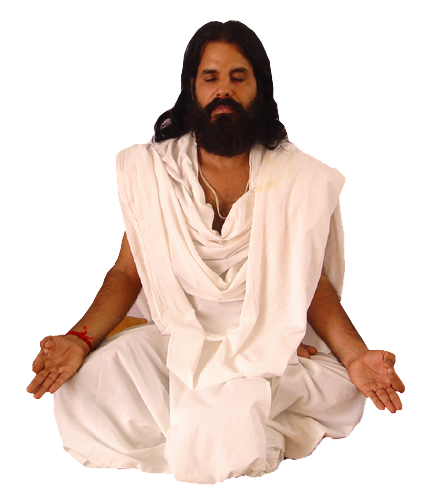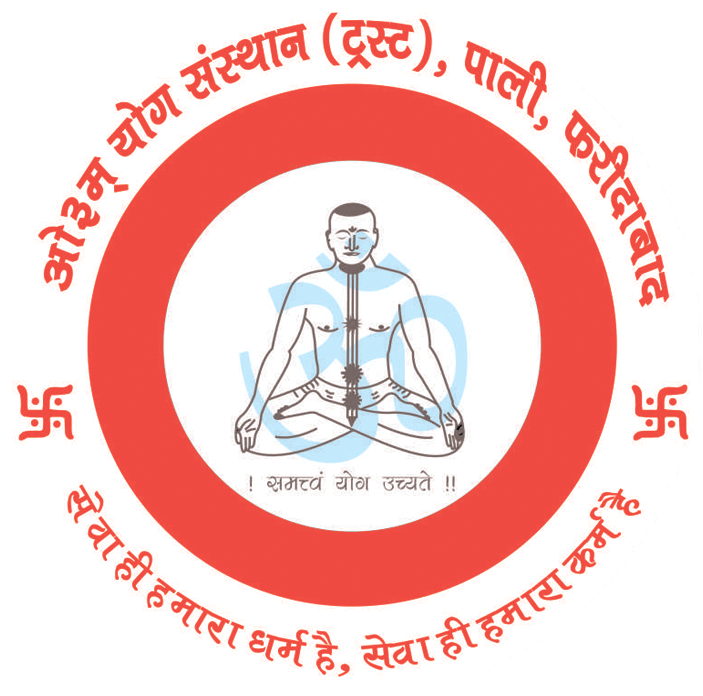- Yam
- Niyam
- Asan
- Bajrangasana
- Kukkutasana
- Omkarasana
- Garbhasana
- Titibhasana
- Kurmasana
- Vakasana
- Parvatasana
- Mayurasana
- Padmasana
- Sidhasana
- Swastikasana
- Shirshasana
- Pavanamuktasana
- Uttanpadasana
- Ardha-halasana
- Sarvangasana
- Matsyasana
- Halasana
- Kandhrasana
- Setubandhasana
- Naukasana
- Chakrasana
- Alambasana
- Bhujangasana
- Shalbhasana
- Dhanurasana
- Khagasana
- Dandasana
- Janushirasana
- Paschimottanasana
- Vakrasana
- Ardha Matsyendrasana
- Vajrasana
- Supta Vajrasana
- Ustrasana
- Yogamudrasana
- Shashankasana
- Baddh Padmasan
- Gomukhasana
- Aakarnadhanurasana
- Bhadrasana
- Vibhakta Paschimotanasana
- Pranayama
- Pratyahara
- Dharana
- Dhyan
- Samadhi

ASANAS; STHIR SUKHAMASNAM (Yog: 2/460)
In traditional language, Asanas means to sit in a comfortable position. Asanas are considered at third place in Ashtang Yoga.
PRAYATAN SHALLITHILIYA ANANAT SAMAPATIBHAYAM ( Yog: 2/47)
TATO DWANDANBHIGHAT: ( Yog: 2/48):
In the state of asana, no other position, work or movement is desirable. Asana should be done with full alertness, focussed, enjoyable and stable mood. Asanas should not be treated as Exercises, since while doing exercise there is sweating, tiredness and fastness of breath. Just opposite, while doing Asana, the mind should feel stability, peace and rest. Asana has two main parts:
- Movement
- Stability
There is always some movement while starting and finishing Asanas. In case done slowly and normally, there is no tiredness.After reaching the last peak of asanas, there is no movement. One should stay in this position for sometime stable & with comfort. With stable mind & with negligible thoughts, this part of asana is significant for giving benefit of physical and mental spiritual experience. Maharishi Patanjili said, Feeling of Stability and Enjoyment ; these are two qualities of Asans. Asans gives comfort in case of mental and physical balance. We have to remain awaken for getting feeling of stability and enjoyment, because in the of Asans only one does Pranayama and Dhyana. It is quite evident that to be truly being called as asana, there has to be feeling of stability and joy.
OBJECTIVE OF ASANAS
KURYAT TADASANAM SADHARAYAM AROGYAM CH ANGLAGHAVAM (H.P. 1:17)
This means that while doing Asans one gets stability, fitness and flexibility. This is very essential for Yog Sadhana, otherwise, because of illness there can break in Yog Sadhana. “Assanen Rajohanti” Pranayam Patkam, Vikaram Mansanyogi Prataharenam sarvada” After doing Asanas, there is no instability & imbalance in nut shell, we can summarize benefits of Asanas as under :
- To improve health and to increase physical and mental balance and increase harmony so that capacity to resist illness increases as well as one gets a feeling of happiness and enjoyment.
- To increase concentration power after removing instability & imbalance . Will start the process of Dhayana.
- In controlling senses (indriya) after balancing emotions.
- To enrich Kundalini power and to do spiritual development.
CLASSIFICATION OF ASANAS
As per Physical structure & action science, Asanas can be classified as under:
- Asanas for improving body : One needs to make body and mind capable of doing peak levelof Yog sadhana. This needs improvements. Thereafter only , we can do Dhayana etc. This includes Asanas resulting in improvement in Body. These can be in following three ways:
a. Asanas done by lying down against back or against abdomen
b. Asanas done while sitting
c. Asanas done while standing. - Resting Asanas : Makrasana, Shishu Asana and Savashan Asana all the three are resting Asanas. The main purpose of these asanas are to remove tiredness and to give rest and relaxation to mind & brain.
- Dhyana asanas : After Asanas , all organs become capable of doing Paranayam & Dhayana. Here we sit in stable and comfortable posturePadamasana, Siddhasana, Sawastikasana & Sukhasana are Dhayana Asanas.
The sequence of Asanas :There is always a balance in normal state of our body, while sitting or by standing this gets the co-ordination from stretch , reflex actions from self controlled Nari Kendra located in cereblum & medulla of small brain. Normally we do not pay any attention to this while awake. These actions are automatic without interrupting potential of joints.Whenever some thing is done intentionally, we have to be alert & concentrate. At this moment, the Lower loader NARI Kendra does not work. It is only the upper loader which is in action. At this moment, we may surpass our potentials. The pulling or pressure can increase contraction. This means we first desire and then do asanas. This stays for some time. Then we leave the asanas. In the last stage of Asanas , we concentrate on inhaling & exhaling, while concentrating on rhythm of breathing, there will be less tension on respiratory system. Thoughts do not come in our mind or they are very less. While staying in state of Asanas, the contraction in lower brain decreases. It gets an opportunity to improve. At this moment, there is less use of analytical power of upper brain. Being peaceful, there is less emotional stress. Being passive stretch, there is no pressure from pulses. In view of less use of force, there is less pressure on heart or respiratory system.
There is less mental tension and slow massage of pulses. Further, due to flow of blood, there is riddance of worth through-out elements. That is why, whosoever does Padamasana, Ushtra asana, Ardh-Matsyendrasana, their joints do not suffer from pain.In the same way, by doing asanas, there is less positive or negative pressure on abdomen.There is automatic balance of pulses. There peace of mind, relaxation and happiness stays for more time. The irritation, anger and hatred do not get opportunity to stay. The people who are doing the yogasana regularly shall definitely find a change in their body.
DO BEFORE DOING ASANAS
- Get up before sun-rise. Drink slowly minimum three glass of water. Do morning walk.
- Take bath daily. Do Yoga after getting oneself fresh. Do not use hot or cold water for bath.
- Wear loose clothes after bath. There should be no problem because of clothing while doing asanas.
- In summer, it is beneficial to do asana on roof, in lawn or on a carpet. The place should be neat and clean. Do Asanas while facing east. It is beneficial to get morning sun rays on body. It is good to do yoga at the same place every day.
- Do not put on fan as far as possible. There should be sufficient flow of air. There should not be any bad smell, mosquito or smoke at that place. The atmosphere should be cheerful and inspiring.
- The asana should be done on earth putting sheet there on. It should not be hard or hot.
- Do not eat anything before doing Asana. There should be gap of 4-5 hours between food and asana.
- It is always advisable to predetermine with the help of experts that which asana would be done and for how much time. Thereafter, it is not good to change the sequence , On this our health personality development and, potential improvement depends.
- Before doing asanas , it is good to do Surya Namaskar. Then do the other assans.
- ladies shouldnot do yogaduring menstruation period. They can do Savashan, Anulom-Vilom Paranayam, Dhayana. During pregnancy, not to do asans after 6-7 months.They can do only Bhadrasana savasana, Tarasana, butterfly, Chakki Exercise & pranayam.
- Before doing asanas, by doing prayers or chanting of mantras, there is increase in good feeling of devotion and surrender. The mind gets concentrated and become peaceful. The feeling of Anger, jealousy, ego etc does not crop up. In this state, the performance of asanas are good.
DO WHILE DOING ASANAS
- Loosen the body. Be peaceful and cheerful. Asanas should not be done in anger, irritation, while talking or listening to radio or watching TV. Only instrument music in low volume is good.
- Please be careful about your age, health level of physical and mental body, flexibility, external atmosphere, season etc.
- Do not resist feeling of urination etc, Do not do asanas when suffering from cold & Cough.
- Do not be in hurry while doing asanas. Do all actions slowly & peacefully. Minimum force is used. Breath is normal. No over sweating. There is no increase in heart beat. Please be careful about these.
- Do not be in hurry to reach last stage of asana. Body will get flexible by daily routine. Increase timings of stay in asanas by 5 seconds each day. It is very essential to be stable, normal and cheerful while doing asanas
- While doing asanas, concentrate specially on in haling and exhaling of breath.
- While doing asanas there is pressure on certain organs of body. In case there is pain, reduce the stretch. There should not be trembling in the body.
- Close your eyes while doing asanas There is no such strict rule . However, in case eyes are closed, there is less outward impulses. One easily concentrate in self.
- While doing practice of Yoga, the sequence should be; reversible posture, sarvang assan, sirshassan,. After sarvangasana, Matsya asana should be done. Similarly, after Halaasana, bhungasana, should be done.
- At the end of Yoga, Savasana should be done for 10-15 minutes.
- Take rest on back or abdomen after 2-3 asanas.
- In young age less than 8 years or in old age, difficult asanas should not be done., because during this age, bones are not powerful and joints are weak.
DO AFTER THE ASANAS
- After asana and after sawassan, do Kapalbhati, deep pranayaam and thereafter japa (chanting).
- After asana, think about flexibility, the feeling, the experience and whether the results are as per the expectation from doing asana.
- After asana, it is not right to get angry, talk loudly or screaming. Slowing start the routine. Take care that mental peace fro asana stay for long time.
- In case you want to take bath after asana, do not eat anything for half an hour.
- It is good to do asana after taking bath.6. please fold the sheet properly for using next day asana. This should not be used for anything else.
